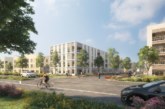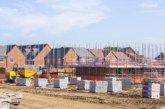 Amber Morley, Senior Consultant, Economics at planning and development consultancy Turley, argues that a joined-up approach is necessary to deliver health infrastructure.
Amber Morley, Senior Consultant, Economics at planning and development consultancy Turley, argues that a joined-up approach is necessary to deliver health infrastructure.
The housing shortfall and ongoing affordability challenge continues to be one of the UK’s largest issues. And while much of the debate rightly centres on the volume of homes required, equally crucial is delivering community infrastructure to make new towns and urban extensions sustainable and desirable places to live.
New housing generates additional demand for facilities such as education, healthcare, open green space and sports centres. Delivering these vital facilities and services requires the collaboration and strategic thinking of multiple parties at both the plan-making and planning application stage. However, securing engagement with stakeholders continues to be a struggle and this limits the ability to effectively plan community infrastructure alongside housing.
In many cases, the system already works well for education provision. Most Local Planning Authorities have developer obligations in place to ensure school places are delivered alongside residential development. Where a two-tier government system exists, there are many best practice examples of County Councils and LPAs working well together. This has also been strengthened by more comprehensive guidance being published by the Department for Education.
In our experience, planning for healthcare facilities alongside residential development is more disjointed. The level of engagement between council planning departments, NHS England, Clinical Commissioning Groups and GP surgeries themselves, varies in different regions across the country. The range of stakeholders, each with their own objectives, makes social infrastructure planning for healthcare more complex.
The scale of development, in particular, presents challenges for engagement. Small-scale developments, for instance 100 homes, typically do not generate demand for even one part-time GP, and since the numbers involved are not particularly large, engagement with healthcare authorities can, therefore, be difficult. Multiple small-scale developments, however, can have a large impact, and this can and does place strain on communities. Likewise, a housing scheme of 1,000 homes may generate a population of 2,500 residents, but this may only trigger the need for just over one full-time GP – typically not enough demand to warrant a new standalone facility. Expanding an existing surgery may instead be the only viable option, so early engagement is vital.
To allow these challenges to be resolved, developers, councils and NHS England need to be more proactive earlier in the process. Many only get involved when a formal planning application has been submitted. However, by local authorities and developers engaging earlier, this ensures that there is time to plan for how future developer contributions to local areas will be spent effectively. This means that the genuine needs of an area can be taken into account, whether it be an ageing population or the growing proportion of younger families.
There is a real opportunity for the planning and property industries to address these challenges and focus on the sustainable growth of communities. Considering the local community impacts of new housing alongside volume itself will be integral to addressing the UK’s housing crisis.









